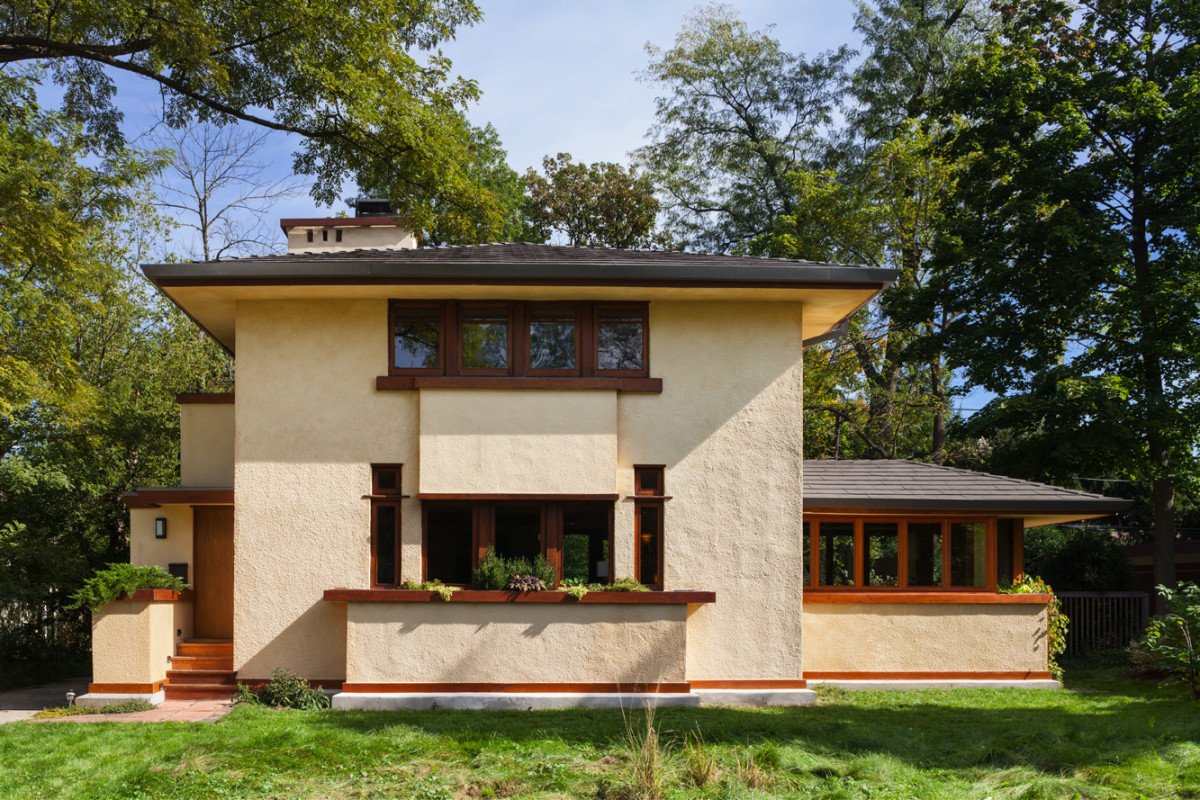#12027. Horizontal Prairie Style Facade: Harmony of Textures and Lines

Before us is a classic example of the Prairie style, one of the most recognizable directions in American architecture from the early 20th century. The horizontally oriented facade is emphasized by wide eaves with pronounced overhangs, creating a sense of solidity and unity with the surrounding landscape.
The light stucco walls harmoniously contrast with dark wooden elements—window frames, doorways, and decorative bands. Particularly interesting is the grouping of windows on the upper level, typical of the Prairie style, where horizontal rows of glazing create a rhythmic accent.
The facade composition is built on clear geometric forms, yet avoids excessive rigidity thanks to the asymmetrical placement of the entrance group and the attached side wing. Flower boxes beneath the lower-level windows add organic quality to the building and connect it with the garden surroundings.
To adapt similar techniques in modern home construction, one should pay attention to the balance of proportions, expressive horizontal lines, and contrast of materials. Even small elements, such as protruding eaves or grouped windows, can give a facade distinctive individuality without requiring complex structural solutions.